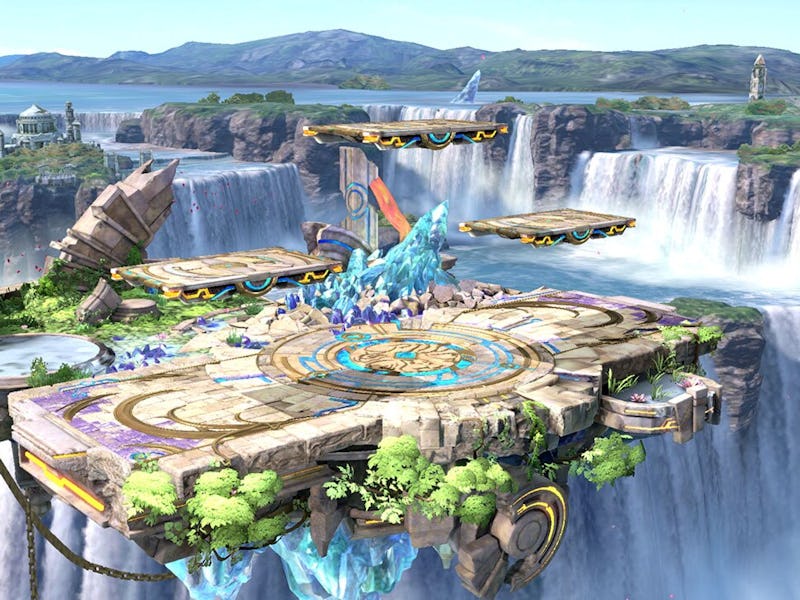25 Years Ago, Nintendo Took a Huge Risk That Changed Pop Culture Forever
“GO!”

In an entertainment age full of shared franchises, we’ve come to expect crossovers between fictional universes as all but inevitable. However, back in 1999, Super Smash Bros. on the Nintendo 64 felt downright revolutionary as it brought to life things that previously, players had only experienced in hypothetical arguments on the school playground and in fanfiction.
It’s no surprise that Nintendo, the most famous video game developer/publisher of all time, would amass a collection of iconic characters. And in the few years preceding Super Smash Bros., it’s made a series of impressive leaps; bringing Mario into the realm of 3D with Super Mario 64, redefining The Legend of Zelda series with Ocarina of Time, and introducing the ultra-hit Pokemon franchise to the world, to name a few. Just as many referred to video game consoles in general as “a Nintendo,” the renown of these series and characters now extended far past their console homes. They were pop culture royalty. Generations of kids grew up knowing who Link, Mario, and Zelda were simply through osmosis.
So shoving them all together in a fighting game seems like a no-brainer now. Technically, it wasn’t the first time that Nintendo had forced Mario and his peers into a fierce competition: they’d already dueled in the successful Mario Kart series and hopped across board games in the first installment of Mario Party, a game released just a month before Smash Bros. And the video game industry had already begun to see promise with expanded universe tournaments, from arcade classics like Marvel vs Capcom to even experiments like Battle Soccer: Field no Hasha, a Japan-only release that allowed Godzilla and his kaiju brethren to play soccer against Ultraman, Kamen Rider and even mobile suits from Gundam.
Shoving them all together in a fighting game seems like a no-brainer now.
Still, there’s a big difference between Mario and Donkey Kong slinging bananas and red shells in kart rides, and the two being thrown into the Thunderdome for a smackdown. There wouldn’t be any blood-letting in Super Smash Bros., but Nintendo was fully aware of the initial shock that would come out of seeing their family-friendly mascots delivering beatdowns on one another. The famous commercial featured Mario, Yoshi, Donkey Kong, and Pikachu skipping through a field of flowers to “Happy Together” before abruptly deciding to brawl. Donkey Kong swings Pikachu by its tail. Mario slugs Yoshi in the gut. It’s all done in goofy slapstick, but there had been nothing quite like it in Nintendo before.
The developer itself may have even been shocked by the concept. Series creator Masahiro Sakurai was a young prodigy at Nintendo at the time. He’d already kickstarted one series, with a certain now-famous pink ball protagonist (Kirby). But he wanted to make a fighting game, and he knew that Nintendo might hesitate to approve the concept of “hey, these beloved, family-friendly characters are now going to punch and pummel each other into oblivion.” So he, along with the late programmer and former President of Nintendo, Satoru Iwata, created a prototype of Super Smash in their spare time.
What he and his team came up with was one of the best-selling games of 1999, one that would help the fighting game genre break through to new audiences. Super Smash Bros. was recognized for its sheer accessibility, the kind of game that veterans and newcomers could operate with ease. Older titles like Mortal Kombat (1992) could be punishing toward new fans, especially when you were playing against pros well-versed in combos and dishing out fatalities. With a memorable roster of characters, each bearing a handful of unique, easy-to-pull-off attacks, Smash Bros. helped bring beginners into the fray.
Super Smash eventually featured combatants not invented by Nintendo itself but by rival video game companies like Capcom.
And hidden behind a few hours of playtime were four unlockable characters that would turn each successive Smash Bros. game into a frenzy of speculation. Nintendo has kept Smash updated over the years, adding more unlockable options as time went on. There was the obvious, like Luigi, to the more obscure fighters like Captain Falcon and Ness, to the hilarious, like Jigglypuff. As the series went on, though, it added new fighters from an increasingly broad set of games, eventually even featuring combatants not invented by Nintendo itself but from rival video game companies like Capcom. Solid Snake (Metal Gear) and Pac-Man are now Smash staples and the latest game’s DLC included Banjo & Kazooie, Kazuya from Tekken, and Sephiroth. Almost as fun as the actual selectable characters in the game is the fascination regarding who could be added next (The internet unanimously seems to favor Goku from Dragon Ball.)
Of course, the idea of multiverses is much more common now than it was in 1999. Nowadays, a superhero movie rarely ends without a post-credits sequence involving another hero or villain, from a far-off corner of the universe, showing up unexpectedly. We’ve turned dream scenarios like Batman vs Superman into a rote part of our pop culture diet. The latest Smash Bros. title, Ultimate, had 89 different characters from across 40 video game franchises. In stark contrast, the first game only had 12.
But those 12 would go on to have a lightning bolt effect on the realities of players. No longer would questions like “Who would win – Fox or Samus?” or “Is Yoshi stronger than Mario?” be relegated to debates in the school cafeteria. Now you can go home, grab some controllers, and find out for yourself. It’s currently one of Nintendo’s flagship franchises amid an entertainment landscape that’s consumed with similar ideas. In fact, you could say that today, we truly live in a Super Smash Bros. world.
This article was originally published on